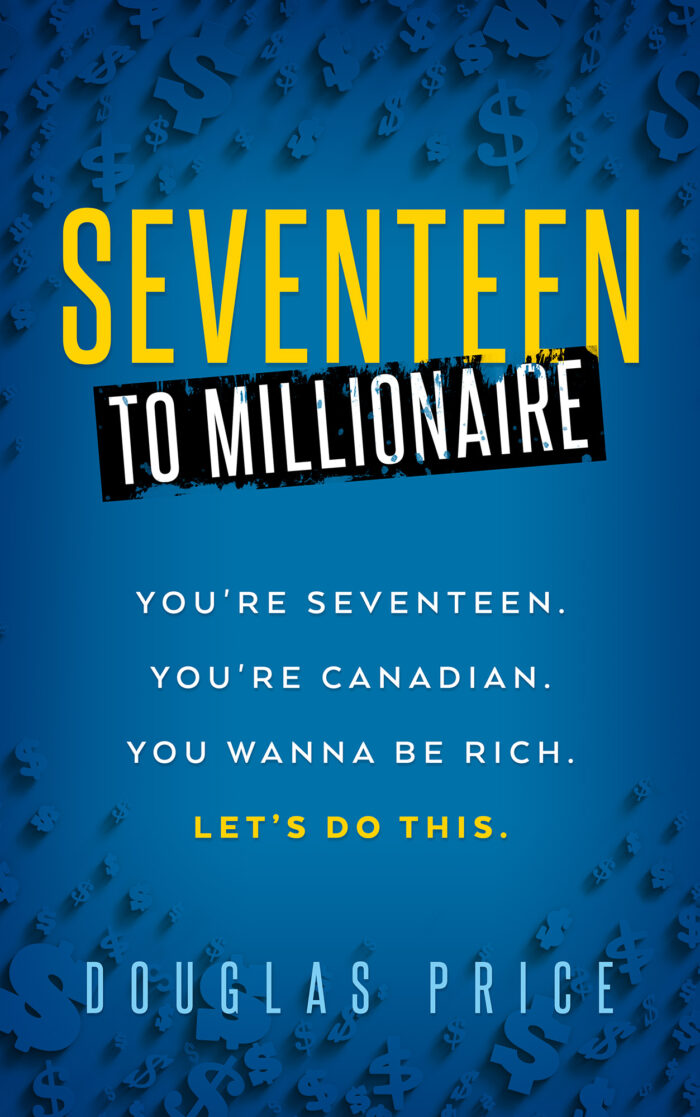Can Any 17-Year-Old Canadian Become A Millionaire?

At Gifting Sense, we are big fans of granular, step-by-step instruction on how to get something done. It’s all good and well to talk about big ideas, but most real progress towards a goal comes from a series of small, but important steps. Small steps are easier to understand, and easier to make, so they tend to get taken. Before you know it, ten small decisions add up to one big accomplishment. This is the beauty of the book “Seventeen to Millionaire”. Douglas Price believes that any 17-year-old Canadian can become a millionaire in their lifetime if they consistently commit to a series of small but important decisions from the end of high school forward. When you read his book, you start to believe him.
Mr. Price was frustrated that he couldn’t take any personal finance classes in High School. So, he wrote a book about money that would have appealed to 17-year-old him – which means it can be read quickly and gives even high school seniors moves they can make to become money-smarter. No surprise, it’s a hit!
Doug isn’t a parent himself but has been a teacher for years, notably at the National Theatre School of Canada. A musician and composer (and master’s graduate of the Royal Conservatoire of Scotland), he has a keen ear, which allowed him to observe that parents who don’t feel like money experts can be hesitant to talk to their kids about household or personal finances. But as an educator, Doug also knows the power of good habits developed young. So, his book encourages 17-year-old students to be brave and sensitively ask their parents questions about money. And he encourages parents to lean into the power of their own youthful wins or mishaps to teach their kids some valuable lessons. Because as any parent will tell you, it’s when your kids ask you about something personal that they may be most interested in hearing from you. Otherwise…
Doug Price was frustrated that he couldn’t take any personal finance classes in High School. So, he wrote a book about money that would have appealed to 17-year-old him – which means it can be read quickly and gives even high school seniors moves they can make to become money-smarter. No surprise, it’s a hit! In fact, it’s an Amazon best-seller.

We need to mention that “Seventeen to Millioniare” is a book written for young people living in Canada. Because Canadians who have read Fred Selinger’s “The Missing Link”, while understanding it’s central message about the importance of making personal financial plans as soon as you enter the workforce, have commented about its’ exclusive use of American payroll deductions, accounts, tools, terms, and acronyms. So, Thank You Doug, for filling that hole!
The Canadian “Missing Link”
Readers familiar with Fred Selinger’s “The Missing Link: From College to Career and Beyond” will recognize our praise of granular instruction. “Seventeen to Millionaire” is a more youthful and therefore slightly less technical read than “The Missing Link”. But it contains a lot of the same clear explanations for financial terms (banks versus brokerages, compound interest, dollar-cost-averaging) and acronyms (RRSP, TFSA, ETFs). And the same sort of powerful narratives around why understanding and using tax-advantaged or employer-sponsored savings tools as early as possible literally sets the stage for a life filled with financial peace of mind – versus worry. Our favourite: the story about someone (not Doug you understand…) who turned down a pay raise because they thought it would bump their entire income into the next tax bracket. Can you think of a better advertisement for why getting comfortable with asking questions about money matters?
And finally, we need to mention that “Seventeen to Millioniare” is a book written for young people living in Canada. Because Canadians who have read Mr. Selinger’s book, while understanding it’s central message about the importance of making personal financial plans as soon as you enter the workforce, have commented about its’ exclusive use of American payroll deductions, accounts, tools, terms, and acronyms. So, Thank You Doug, for filling that hole!
Now of course if you have middle school students at home, the easiest way to get them started on a journey towards financial peace of mind, is to have them practice thinking before buying when making various age-appropriate purchases. Your family can use our tools to practice thinking before buying or develop your own. We just want to point out that today’s school-aged children can largely be spared constant worry about money, if they can develop productive spending habits in the first place, versus learning about typical financial pitfalls the hard way – by falling into them!
To learn more, click on the pink or green buttons below.




